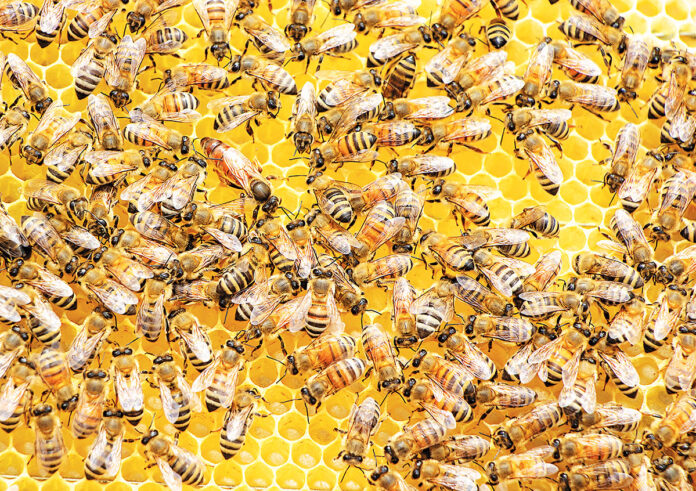Acommunity driven committee has made its opposition to the proposed Southern Winds Offshore Project known to Grant District Council.
Formed to protect the future wellbeing of the ocean and coastline surrounding Port MacDonnell, the Southern Coast Ocean Care (SCOC) committee has ramped up its opposition to the renewable energy infrastructure zone with a presentation to elected members of council.
Representing SCOC, Chris Carrison presented at council’s July monthly meeting.
Mr Carrison introduced himself as an electrician and abalone diver, which he said gives him insight into the proposed project.
“I’m fairly conversant with the electrical world and the bottom of the ocean. 30 years as an abalone diver, 8000 productive hours under water. I know the Southern Ocean,” he said.
Comprised of fishers, local business owners, and community members, Mr Carrison explained Southern Coast Ocean Care was formed around three months ago when the community first got wind of the proposal.
“At that point I did not really have an opinion. I thought green energy can only be a good thing… what are we whinging about,” he said.
With more information since then Mr Carrison said he was 100% opposed to the development of the ‘Ocean Offshore Wind Zone’.
Southern Coast Ocean Care encourages the move towards renewable energy, however the group believes it should not come at the expense of ocean health and productivity.
“We are not opposed to the project, but the zone. I am opposed to the Federal Government even thinking about putting it in our state waters,” Mr Carrison said.
Renewable energy company BlueFloat Energy has lodged plans for a 77-turbine wind farm between 10km to 30km off the coast of Port MacDonnell.
The proposed development will occupy a total area approximately 300km, stretching from Cape Douglas in SA to Warrnambool in Victoria.
“The piece we can oppose, in my opinion anyway, is in the state government waters, from the South Australian border to Cape Douglas. And takes up area of ocean about one-fifth the size of Grant District Council,” Mr Carrison said.
Mr Carrison listed a number of impacts including visual, physical, ecological and industry.
“They will be prominent as a visual impact… three times the height of Mount Schank which is 100m. There is going to be two sub-stations, another visual impact,” he said.
“The physical impact is another thing I would like to address. The proposal will result in ‘no go’ zones. There is no doubt about that.”
Port MacDonnell is home to the Southern Hemisphere’s largest rock lobster fishing fleet and also boasts a thriving recreational fishing and tourism industry.
“Cray fishing industry will be impacted. At this point in time is sustainable. It’s a quota managed fishery and if there was to be a loss of ground, the sustainability would either go down or the quota reduced,” Mr Carrison said.
“About 30% of the quota is caught in the proposed area. There is about 60 boats and six processers that work within the Grant council area. They would at least relocate boats and factories. It’s not sustainable to lose that percentage of ground.
“Seven charter boats operate out of Port MacDonnell. Their main business is fishing tuna. And they operate within the proposed zone. The loss would be huge.”
Learning about the project, Mr Carrison expressed concern about the environmental impact.
“The thing that really changed my mind about this, the biggest impact is the environmental impact,” he said.
The proposed site for the wind farm is located directly along the continental shelf, the main source of the Bonney Coast upwelling.
Forming part of his presentation, Mr Carrison quoted from the Federal Government Species Profile Threats database.
“The Bonney Coast upwelling is a predictable, seasonal upwelling bringing cold nutrient rich water to the sea surface and supporting regionally high productivity and high species diversity in an area where such sites are relatively rare,” he said.
“It is one of 12 unique upwellings of this nature in the world, and is significant as one of the largest and most predictable and most prominent upwellings in south-eastern Australia.
“In addition to whales, many endangered and listed species frequent the area.
“The Bonney Coast upwelling is defined as a key ecological feature as it is an area of high productivity and aggregations of marine life.”
The Bonney coast lies between Cape Jaffa in South Australia and Portland in Victoria.
“The proposed zone is exactly in this upwelling. That upwelling is the lifeblood of the southern coast,” Mr Carrison said.
“My time in the water, I wait and wait for that upwelling. It’s what feeds the southern coast.
“There is nothing for nothing in this world. Energy production by those windmills will cost us. That upwelling is driven by south east winds that will be interrupted by these towers. That is a fact and sad.
“We have no right, the government has any right, to destroy this.”
Mr Carrison also brought attention the end-of-life plan, which he said there was none.
“The worst thing out of all of this is there is no end-of-life plan. BlueFloat Energy has been asked and they said they do not have one,” he said.
“They will eventually fall over. These towers are 38 metres in diameter, the depth of water is 40 metres. It will be a hazard, absolutely disastrous. Someone has to be able to deal with that and there is no plan.”
In closing, Mr Carrison said there was nothing for the community of Port MacDonnell and the state to gain from the development.
“I understand the green thing and renewables … this proposal does not feed electricity on to this state,” he said.




